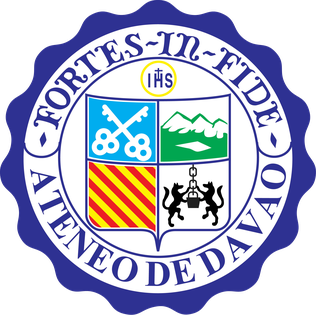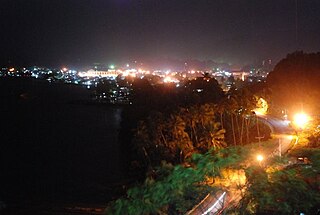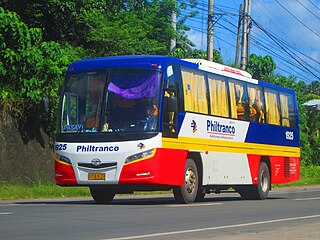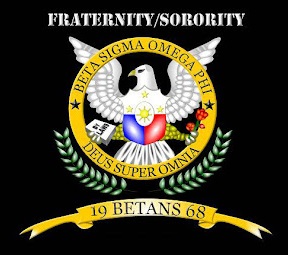
Surigao del Sur, officially the Province of Surigao del Sur, is a province in the Philippines located in the Caraga region in Mindanao. Its capital is Tandag City. Surigao del Sur is situated at the eastern coast of Mindanao and faces the Philippine Sea to the east.

Davao del Norte, officially the Province of Davao del Norte, is a province in the Philippines located in the Davao Region in Mindanao. Its capital and largest city is Tagum. The province also includes Samal Island to the south in Davao Gulf.

Davao Region, formerly called Southern Mindanao, is an administrative region in the Philippines, designated as Region XI. It is situated at the southeastern portion of Mindanao and comprises five provinces: Davao de Oro, Davao del Norte, Davao del Sur, Davao Oriental and Davao Occidental.

Davao Oriental, officially the Province of Davao Oriental, is a province in the Philippines located in the Davao Region in Mindanao. Its capital is the city of Mati, and it borders the province of Davao de Oro to the west, and Agusan del Sur and Surigao del Sur to the north. The province is the traditional homeland of the Mandaya and Kalagan/Kaagan.

Tandag, officially the City of Tandag, is a 5th class component city and capital of the province of Surigao del Sur, Philippines. According to the 2020 census, it has a population of 62,669 people.

Ateneo de Davao University is a private Catholic basic and higher education institution run by the Philippine Province of the Society of Jesus in Davao City, Davao del Sur, Philippines. It was established in 1948 when the Jesuits took over the administration of the diocesan school, St. Peter's Parochial School. The Jesuits renamed the school to "Ateneo de Davao" after taking control. At that time, the Jesuits named all the schools that they were opening "Ateneo." Ateneo de Davao is the seventh school in the country to be named as Ateneo by the Jesuits. The university has five undergraduate schools, namely the School of Arts and Sciences, School of Business and Governance, School of Engineering and Architecture, School of Education and the School of Nursing. The graduate programs are under these units as well. The College of Law is a separate unit within the university. The university also runs a grade school and high school, both Junior High and Senior High.

Bislig, officially the City of Bislig, is a 3rd class component city in the province of Surigao del Sur, Philippines. According to the 2020 census, it has a population of 99,290 people.

Surigaonon is an Austronesian language spoken by Surigaonon people. As a regional Philippine language, it is spoken in the province of Surigao del Norte, Dinagat Islands, Surigao del Sur, and some portions of Agusan del Norte, especially the towns near Lake Mainit, Agusan del Sur and Davao Oriental.
Kamayo, also called Kadi, Kinadi, or Mandaya, is a minor Austronesian language of the central eastern coast of Mindanao in the Philippines.

Bayugan, officially the City of Bayugan, is a 5th class component city in the province of Agusan del Sur, Philippines. According to the 2020 census, it has a population of 109,499 people..

Tagum, officially the City of Tagum, is a 1st class component city and capital of the Davao del Norte, Philippines. According to the 2020 census, it has a population of 296,202 people making it the most populous component city in Mindanao.

The Pan-Philippine Highway, also known as the Maharlika Highway, is a network of roads, expressways, bridges, and ferry services that connect the islands of Luzon, Samar, Leyte, and Mindanao in the Philippines, serving as the country's principal transport backbone. Measuring 3,379.73 kilometers (2,100.07 mi) long excluding sea routes not counted by highway milestones, it is the longest road in the Philippines that forms the country's north–south backbone component of National Route 1 (N1) of the Philippine highway network. The entire highway is designated as Asian Highway 26 (AH26) of the Asian Highway Network.
The legislative districts of Davao del Norte are the representation of the province of Davao del Norte in the various national legislatures of the Philippines. The province is currently represented in the lower house of the Congress of the Philippines through its first and second congressional districts.

Philtranco Service Enterprises, Inc. is a bus company in the Philippines, servicing routes to Bicol, Eastern Visayas, Caraga, Davao Region, and Northern Mindanao. It is the oldest bus operator in the Philippines and in Asia. It is also the only bus carrier with a nationwide public transport franchise. Philtranco currently has more than 250 buses for its operations.

The following outline is provided as an overview of and topical guide to the Philippines:

The Polytechnic University of the Philippines is a coeducational research state university in Manila, Philippines. It was founded on 19 October 1904, as the Manila Business School (MBS) and as part of Manila's public school system. It was eventually promoted to a chartered state university in 1978, by virtue of Presidential Decree 1341. PUP has more than 20 branches and campuses across Central Luzon, Southern Luzon and Metro Manila. With over 70,000 enrolled students, PUP claims to be the largest state university in the Philippines by student population.

Beta Sigma Omega Phi is a service fraternity and sorority founded at University of Bohol on October 10, 1968. This was organized by Frank Paz Jr., Frederick Loor, and Remy Galbizo. Their aims were to foster lifetime brotherhood and sisterhood and to build noble leaders and better citizens. Members are encouraged to promote the welfare of students and to work for better and greater involvement in the affairs of the school as well as in the community. The organization facilitates a variety of community civic involvement, and services like tree planting, feeding programs, bloodletting, operation tuli, and lately the Brigada Eskwela. Betans 1968 have established 72 collegiate chapters throughout Philippines; most of these are on the island of Mindanao.
National Route 1 (N1) is a primary national route that forms part of the Philippine highway network, running from Luzon to Mindanao. Except for a 19-kilometer (12 mi) gap in Metro Manila and ferry connections, the highway is generally continuous. Most sections of N1 forms the Pan-Philippine Highway except for sections bypassed by expressways.
The Surigao–Davao Coastal Road or the President Diosdado P. Macapagal Highway is a 677-kilometer (421 mi), two-to-six lane highway that connects the provinces of Surigao del Norte, Surigao del Sur, Davao Oriental, Compostela Valley, and Davao del Norte. It connects the Maharlika Highway in Placer, Surigao del Norte to the Agusan in Tagum. Running along the eastern coast of Mindanao, it is one of the longest roads in the Philippines.

North Eastern Mindanao State University (NEMSU), formerly known as Surigao del Sur State University, is a state university system located in the province of Surigao del Sur. Its main campus is located in Tandag, with additional sites in Bislig, Tagbina, Lianga, Cagwait, San Miguel, and Cantilan. The university provides higher education in the fields of industrial technology, teacher education, agriculture, agribusiness, business administration, forestry, aqua-marine technology, environmental science, engineering, and technology.
















